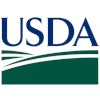As the Food Safety Modernization Act strengthens, risk grows for manufacturers not compliant with the new regulations. It’s not hard to imagine noncompliance resulting in the downfall of a business. The day has come for manufacturers to have strong controls in place for managing production and other aspects of the supply chain. It’s not only good for food safety — it’s also good for business.
FSMA has four main objectives:
- Improve capacity to prevent food safety problems
- Improve capacity to detect and respond to food safety problems
- Improve the safety of imported food
- Miscellaneous provisions, such as whistle-blower protection
If your company is required by the FDA to register under its current food facility registration regulations, FSMA applies to you.
More than ever before, FSMA intends to hold the food industry accountable for securing the supply chain. Here’s a short list of what’s within the FDA’s power:
- Require a recall rather than recommend a recall.
- Require verification of imported ingredients used in U.S.-produced feed; the burden to track is on the manufacturer.
- Compel disclosure of records without a warrant.
- Detain ingredients or inventory, causing delays in production and even immediate shutdown.
- Suspend license of noncompliant operators.
- Conduct unscheduled audits, typically records-based.
Protecting your business
Automation is helping the feed and grain industries meet the best practices called for by FSMA and other regulatory requirements. More than just lowering production costs, automation can improve food safety and help mitigate regulatory and commercial risks.
Consider this common plant scenario: A plant operator producing a pre-mix for pet food is preparing hand-adds. An alarm goes off somewhere in the plant, and the operator stops what he’s doing to attend to the problem.
Automation can ensure that when the operator returns to his station, the plant’s processes aren’t jeopardized. The system can inform where he left off in the process, preventing errors such as too many, or not enough, ingredients from being added.
Additionally, data from the plant’s control system, including lot tracking, can automatically verify regulatory compliance and prove the product was manufactured correctly. The audit trail provides assurance of quality and consistency to the plant’s customer, and the FDA.
Yet, automation alone is not enough to protect you. A software platform verging on obsolescence increases risk. Manufacturers who operate on systems that are difficult to support or prone to error should not ignore what could be a ticking time bomb.
Is automation imperative for meeting FSMA requirements? No. Manual processes can keep you compliant, although they naturally invite human error. Cost is also a consideration. Manual processes can add production time and steal from your bottom line.
Tremendous advancements in process automation technology give you more options for protecting your business, people and their animals.
Those who can provide assurances of safety and compliance will gain their customers’ trust — and a competitive advantage.
Subscribe to Magazine













